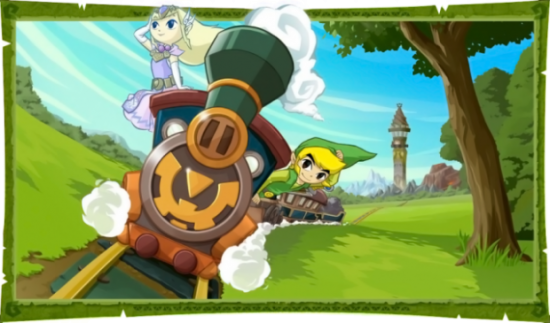Evolution of an Overworld: Zelda’s Transportation System
Posted on August 03 2012 by Mases Hagopian
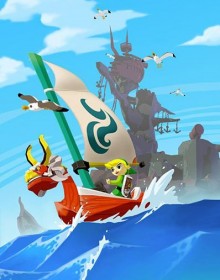 Over nine years ago, something new was introduced to the Zelda series. Today, that something is commonly referred to as the transportation system. It’s a pretty simple concept: It consists of a large map that must be traversed via some alternate mode of transportation in order to reach individual areas, which are explored on foot. Despite how simple the concept is, it’s proven to be pretty tough to master, as shown by its mixed reception in the series. In this article, I’ll be going over the four games that it’s been used in, discuss my personal opinions on them, and talk about how the system has evolved over the years. I will not be including the games with Epona strictly because they make it possible to traverse the overworld almost entirely on foot if you want to; my definition of the transportation system requires that the transportation is needed to travel. I’ll be starting off with the series’ debut title on the Nintendo GameCube.
Over nine years ago, something new was introduced to the Zelda series. Today, that something is commonly referred to as the transportation system. It’s a pretty simple concept: It consists of a large map that must be traversed via some alternate mode of transportation in order to reach individual areas, which are explored on foot. Despite how simple the concept is, it’s proven to be pretty tough to master, as shown by its mixed reception in the series. In this article, I’ll be going over the four games that it’s been used in, discuss my personal opinions on them, and talk about how the system has evolved over the years. I will not be including the games with Epona strictly because they make it possible to traverse the overworld almost entirely on foot if you want to; my definition of the transportation system requires that the transportation is needed to travel. I’ll be starting off with the series’ debut title on the Nintendo GameCube.
The first time the transportation system appeared in Zelda was in the Great Sea of The Wind Waker. Nintendo’s goal was to create an epic journey across a vast, open sea by having the player sail between numerous islands. It was a huge shift from the typical overworld, where getting from place to place could almost always be done on foot. This new style of overworld had lots of great ideas behind it, but many of them fell short of their potential due to bad execution.
While the game had a nice sense of exploration, the adventurous feel was weaker than it could have been. Sure, there were occasional islands in the distance to entice exploration, but they were nothing more than silhouettes that were typically seen one-at-a-time. The islands were spread too far apart, which, combined with the lack of speed on the sailboat, made traveling between islands take too long. Add in the fact that the Great Sea had little to no atmosphere since it was mostly empty save for the endless water, and you’ve got a pretty half-baked journey. It’s pretty fun for the first few hours of the game, but it gets old after a while, ultimately becoming a chore.
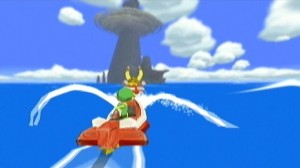 Moreover, many of the islands were pretty small and didn’t offer much, oftentimes requiring specific items for proper exploration, making early trips to them virtually pointless. If the whole point in having numerous islands is for them to be explored, closing off so many of them completely removes incentive. Some people will defend the game by pointing out that some of the islands were quite large, with room to explore, but while this is true, they were only able to be explored at designated points in the game because of its linear design. While it was possible to travel to some of these large islands before the appropriate time in the story, they, as with many of the small islands, required a specific item to advance, meaning they couldn’t be explored until later. Add in the fact that about 90% of the overworld is nothing but water, and exploring the different islands isn’t very adventurous at all.
Moreover, many of the islands were pretty small and didn’t offer much, oftentimes requiring specific items for proper exploration, making early trips to them virtually pointless. If the whole point in having numerous islands is for them to be explored, closing off so many of them completely removes incentive. Some people will defend the game by pointing out that some of the islands were quite large, with room to explore, but while this is true, they were only able to be explored at designated points in the game because of its linear design. While it was possible to travel to some of these large islands before the appropriate time in the story, they, as with many of the small islands, required a specific item to advance, meaning they couldn’t be explored until later. Add in the fact that about 90% of the overworld is nothing but water, and exploring the different islands isn’t very adventurous at all.
Now, I’m aware that there were multiple platforms and submarines scattered across the Great Sea between its many islands, and it’s true that they contained things like rupees, Treasure Charts, Pieces of Heart, and even the occasional Empty Bottle. But these often felt too far out of the way, making them not of much interest to visit. If they had been more conveniently placed, this probably wouldn’t have been an issue and they might have helped with the travel distance.
However, I don’t consider any of these to be the biggest flaw with the Great Sea. There’s one flaw that stands out the most to me, and it plagued nearly every moment of sailing the Sea: changing the wind’s direction.
 Don’t get me wrong, the idea wasn’t bad in itself. It only made sense, since Link used a sailboat to get from island to island. It was the execution that was the problem. Any time the direction of the wind needed to be changed, the player had to pull out the Wind Waker and conduct a song, meaning the c-stick had to be moved in specific directions in a specific tempo. This meant that the song couldn’t be played quickly, unlike the ocarina songs in the Nintendo 64 games, making the task unnecessarily tedious, especially with how often it had to be done in the game. If there had been some sort of way to change the wind’s direction while on the go, it would have been much more efficient.
Don’t get me wrong, the idea wasn’t bad in itself. It only made sense, since Link used a sailboat to get from island to island. It was the execution that was the problem. Any time the direction of the wind needed to be changed, the player had to pull out the Wind Waker and conduct a song, meaning the c-stick had to be moved in specific directions in a specific tempo. This meant that the song couldn’t be played quickly, unlike the ocarina songs in the Nintendo 64 games, making the task unnecessarily tedious, especially with how often it had to be done in the game. If there had been some sort of way to change the wind’s direction while on the go, it would have been much more efficient.
Despite my numerous complaints, I in no way consider the Great Sea to be a bad overworld. I actually found it pretty enjoyable my first time through. It just suffers from a few unnecessary inconveniences that should have been much better, and after multiple playthroughs, these inconveniences really show. Even though I still somewhat enjoy the Great Sea, I can’t deny its numerous flaws.
But with all these flaws being relatively easy to fix, you’d think the next game to use the transportation system would have fixed them, right? Well… sadly, that’s nowhere near what happened.
Nearly five years after the release of The Wind Waker, Phantom Hourglass came out on the Nintendo DS as a direct sequel to its GCN predecessor. As a direct sequel, it brought back the transportation system that had gone unused for the last four games. Again, you would expect the issues with the Great Sea to have been fixed in the second Zelda game to use the transportation system, but somehow, things had only gotten worse. It’s pretty strange that this was the case, as Phantom Hourglass’s ocean was set up to be the superior of the two transportation overworlds. The boat didn’t rely on the wind in order to move forward, every island had plenty of room to explore, the ocean wasn’t too large, and it was designed to act more as a means to get from island to island rather than used to explore the waters for secrets. So what happened to make it more tedious than the Great Sea?
 For starters, the boat was a pain to operate. In order for the player to move, they had to pause the game and draw a line on the touchscreen dictating the path the boat would take. These would rarely be straight lines, due to the touchscreen’s unforgiving drawing detection, meaning that the path had to be redrawn many times. Additionally, every time the boat reached the end of the drawn path, it stopped and forced you to draw another line. Even if you tried to draw another line before reaching the end point, you still had to stop. Sure, you could draw a line all the way to your desired destination, but that made it even more frustrating to get the line right. Despite the fact that the wind was no longer an issue for moving, the same concept of having to stop and do something to set your course had been repeated and was worse than before.
For starters, the boat was a pain to operate. In order for the player to move, they had to pause the game and draw a line on the touchscreen dictating the path the boat would take. These would rarely be straight lines, due to the touchscreen’s unforgiving drawing detection, meaning that the path had to be redrawn many times. Additionally, every time the boat reached the end of the drawn path, it stopped and forced you to draw another line. Even if you tried to draw another line before reaching the end point, you still had to stop. Sure, you could draw a line all the way to your desired destination, but that made it even more frustrating to get the line right. Despite the fact that the wind was no longer an issue for moving, the same concept of having to stop and do something to set your course had been repeated and was worse than before.
This setback was only worsened by the fact that the ocean, much like the Great Sea, was rather bland. Pretty much all there was to look at the entire time sailing was, yet again, a bunch of water. It’s not as big of a deal as it was with the Great Sea, since the ocean was designed as a means to quickly get from place to place rather than a vast area to be explored, but the genuine lack of scenery in the four different quadrants of the ocean is still unforgivable. I’ll give Phantom Hourglass credit for adding more enemies to keep things interesting, but almost all of these enemies were rather boring and incredibly easy to take out or avoid. It was designed to keep the action frequent and allow the ocean to be entertaining, but it quite honestly didn’t accomplish either of these goals.
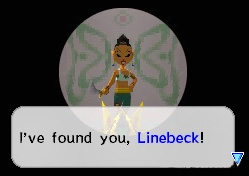 Of course, no tedious overworld would be complete without a recurring annoyance. At least, that was Phantom Hourglass’s logic; shortly after the first three dungeons, some woman named Jolene started showing up. A lot. She would jam the ship’s controls with a torpedo and board it in a heartbeat, starting a battle with the exact same ritual every time. Sure, Linebeck gave you a rupees as a reward (which increased after each victory), but that only lasted until 200 rupees. In other words, that was the final reward Linebeck gave you no matter how many more times you fought Jolene. After that, there was absolutely no reason to fight her, but she kept appearing anyway. It would have been good if she had only appeared in a few scripted events, with her fights getting progressively more challenging, but with the way things were, Jolene was the last thing that needed to happen to the game.
Of course, no tedious overworld would be complete without a recurring annoyance. At least, that was Phantom Hourglass’s logic; shortly after the first three dungeons, some woman named Jolene started showing up. A lot. She would jam the ship’s controls with a torpedo and board it in a heartbeat, starting a battle with the exact same ritual every time. Sure, Linebeck gave you a rupees as a reward (which increased after each victory), but that only lasted until 200 rupees. In other words, that was the final reward Linebeck gave you no matter how many more times you fought Jolene. After that, there was absolutely no reason to fight her, but she kept appearing anyway. It would have been good if she had only appeared in a few scripted events, with her fights getting progressively more challenging, but with the way things were, Jolene was the last thing that needed to happen to the game.
A few other minor problems exist with the ocean in Phantom Hourglass, but I think you get the idea. Phantom Hourglass’s overworld was a complete flop. However, as with the Great Sea, don’t take my ranting the wrong way. I definitely don’t hate the overworld, there are just a slew of problems with it that made it annoying a lot of the time. Nintendo obviously realized the mistakes they made with the Great Sea and actively tried to fix them in Phantom Hourglass, but they wound up repeating many of the same mistakes and making new ones.
So what was next? Was Nintendo simply going to give up on the transportation overworld and go back to the traditional style for good? Or would they try once again to improve on it and redeem themselves? Obviously they chose the latter, because two years later the transportation system returned again, and this time Nintendo succeeded in making it better.
Spirit Tracks was released as a sequel to Phantom Hourglass and was set in a completely new land, New Hyrule. Nintendo decided to do away with the boat and have a vehicle that could take you across the ground. This gave birth to the Spirit Train. You’ve probably heard the phrase “third time’s the charm” a few times in your life, and it perfectly describes Nintendo’s third attempt at a transportation overworld. The Spirit Train was a phenomenal triumph over the past two attempts — it accomplished what Phantom Hourglass‘s ocean failed at.
While the travel often took some time, much like it did with the Great Sea, it wasn’t nearly as big of a deal. In fact, I actually found it quite enjoyable: The scenery during travel in Spirit Tracks was simply gorgeous. Unlike its predecessors, Spirit Tracks actually had different types of terrain, complete with views of forests, snowy tundra, above and below the water, an erupting volcano, a desert, and the gloomy Dark Realm at the end.
There was also lots of activity. One of the problems of travel taking so long in the previous games was that there was almost no action, nothing to keep the travel involving. Spirit Tracks avoided that pitfall; there were lots of diverse enemies that, for the most part, weren’t incredibly easy. They required that the player stayed constantly aware so that the train didn’t take a beating and ultimately explode, causing a game over.
One of these enemies was the Dark Train, a possessed train that wanders the Spirit Tracks. This enemy would appear in groups of two or three at specific points on the tracks and would destroy the Spirit Train on impact. This required that the player pay attention not only to the bottom screen where the action was, but the top map screen as well, so that they could see where the Dark Trains were on the tracks and change their course to avoid them.
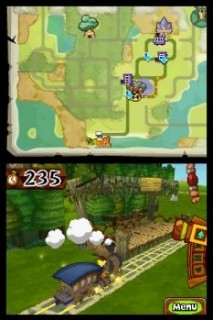 Later on in the game, a more advanced version known as the Armored Train appeared. These were faster than the Dark Trains and more intelligent; they actually followed the Spirit Train and anticipated where it would turn. These instances in the game were intense and required a remarkable amount of focus in order to get out alive. Each encounter was thrilling for me, and this is actually one of the things that keeps me coming back to Spirit Tracks.
Later on in the game, a more advanced version known as the Armored Train appeared. These were faster than the Dark Trains and more intelligent; they actually followed the Spirit Train and anticipated where it would turn. These instances in the game were intense and required a remarkable amount of focus in order to get out alive. Each encounter was thrilling for me, and this is actually one of the things that keeps me coming back to Spirit Tracks.
All of these aspects combined made the long travel nearly a moot point, by making it actually enjoyable.
The system wasn’t perfect though. There was one issue that hindered an otherwise fantastic mode of transportation: The warp system. Instead of being able to warp at will, there were structures at specific locations on the map that were connected to one another, allowing you to travel between them. This was very tedious, as one, they had to be hunted down, and two, they only led to one destination. Instead of letting you choose where you wanted to warp, you had to memorize or note which warp points led to which. This was very annoying and very limiting. If Nintendo had let us choose where to warp to, it would have been fine and I probably wouldn’t have had much of a beef with it. But ultimately it ended up being an unnecessarily limiting warp system.
Despite this, the Spirit Train’s positives easily outweigh any negatives. After playing all three of these games, the train was easily my favorite and without a doubt the one I considered the best. Of course, with Spirit Tracks improving on its predecessors as much as it did, I had no doubt that Nintendo would be able to improve the transportation overworld even more the next time around. The only question I had was how and when Nintendo was going to do so. Would it be in the next console title? Or would they wait for another handheld? Whatever the case was, I was quite certain Nintendo would pull a sort of trilogy on us and go for the only style of travel they hadn’t done yet: Flying. They’d done water and land travel, so flying seemed like the next logical choice. Of course, we all know that this was proven true with The Legend of Zelda: Skyward Sword.
Less than a year ago, Skyward Sword released for the Wii and became the fourth game in the series to have a transportation overworld, and it was a monumental improvement over even Spirit Tracks. The Sky and Loftwing in Skyward Sword set a new benchmark for the transportation overworld by flawlessly merging nearly every great idea that had been used for it in the past. The Loftwing was extremely fast, changing directions didn’t require stopping, the Sky wasn’t too big or too small and provided plenty of atmosphere (despite not having different scenery), and travel between the Sky and surface was quick and efficient. Everything flowed together seamlessly; traveling from place to place was effortless.
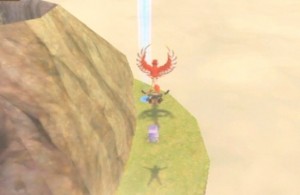 The largest factor that aided in the travel, though, was the immersion involved. The Loftwing could only reach top speed via shaking the Wiimote to gain altitude and diving to pick up speed. It may sound tedious, but it isn’t: It was easy to do and felt quite natural once you got the hang of it, providing the perfect balance between the relaxed feel of the Great Sea and the focused travel of the DS games. There were also very few enemies or obstacles to get in our way, which was a wise decision, as constant combat in the air would have probably gotten very annoying. Obstacles were strategically placed to ensure that the the Sky didn’t become boring, but they were kept to a minimum and this worked very well. I praised Spirit Tracks for having many enemies, but the Spirit Train moved on its own along a path, where little to no threats showing up would have made it a snorefest. The Sky was pretty much the exact opposite, requiring direct control while traveling, so Nintendo thankfully left out extraneous hazards.
The largest factor that aided in the travel, though, was the immersion involved. The Loftwing could only reach top speed via shaking the Wiimote to gain altitude and diving to pick up speed. It may sound tedious, but it isn’t: It was easy to do and felt quite natural once you got the hang of it, providing the perfect balance between the relaxed feel of the Great Sea and the focused travel of the DS games. There were also very few enemies or obstacles to get in our way, which was a wise decision, as constant combat in the air would have probably gotten very annoying. Obstacles were strategically placed to ensure that the the Sky didn’t become boring, but they were kept to a minimum and this worked very well. I praised Spirit Tracks for having many enemies, but the Spirit Train moved on its own along a path, where little to no threats showing up would have made it a snorefest. The Sky was pretty much the exact opposite, requiring direct control while traveling, so Nintendo thankfully left out extraneous hazards.
However, despite that the Sky is, in my opinion, the best of the four transportation overworlds in the series, there was something missing; there wasn’t a whole lot to do in the Sky aside from finding a few Goddess Chests (and only after they’re activated), completing the game’s Gratitude Crystal sidequest, and playing a handful of entertaining minigames. Even together, these weren’t enough content to reach the Sky’s true potential. There should have been multiple islands to freely explore; there definitely wasn’t a need for the amount of islands there was in the Great Sea, as that would have only cluttered the overworld, but the lack of things to do in the Sky as it stands is simply inexcusable.
It’s not nearly as big of an issue as the troubles the three previous overworlds experienced, and it’s quite honestly the only issue the Sky suffered from, but it’s an issue nonetheless. It’s a sad fact, and it’s something I seriously hope Nintendo fixes the next time around, since I’m certain we’re going to see the transportation overworld return eventually, even though I don’t expect it to be any time soon; we’ve seen it used with three games in a row, so I think it’s natural to believe that Nintendo will return to the traditional style of overworld for the next few games. Hopefully next time they take what Skyward Sword did right and give it more content.
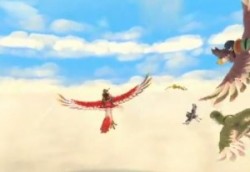 The transportation system has definitely seen its share of successes and failures over its many years with the series. The most important thing, however, is that it’s evolved and improved tremendously. More work still needs to be done in order to truly perfect the concept, but if the past two games are any indication, I have little doubt that Nintendo will get everything right next time around. Only time will tell if that ultimately happens, but one thing’s for sure: I’m extremely psyched to see how Nintendo will further evolve this brilliant style of overworld.
The transportation system has definitely seen its share of successes and failures over its many years with the series. The most important thing, however, is that it’s evolved and improved tremendously. More work still needs to be done in order to truly perfect the concept, but if the past two games are any indication, I have little doubt that Nintendo will get everything right next time around. Only time will tell if that ultimately happens, but one thing’s for sure: I’m extremely psyched to see how Nintendo will further evolve this brilliant style of overworld.



